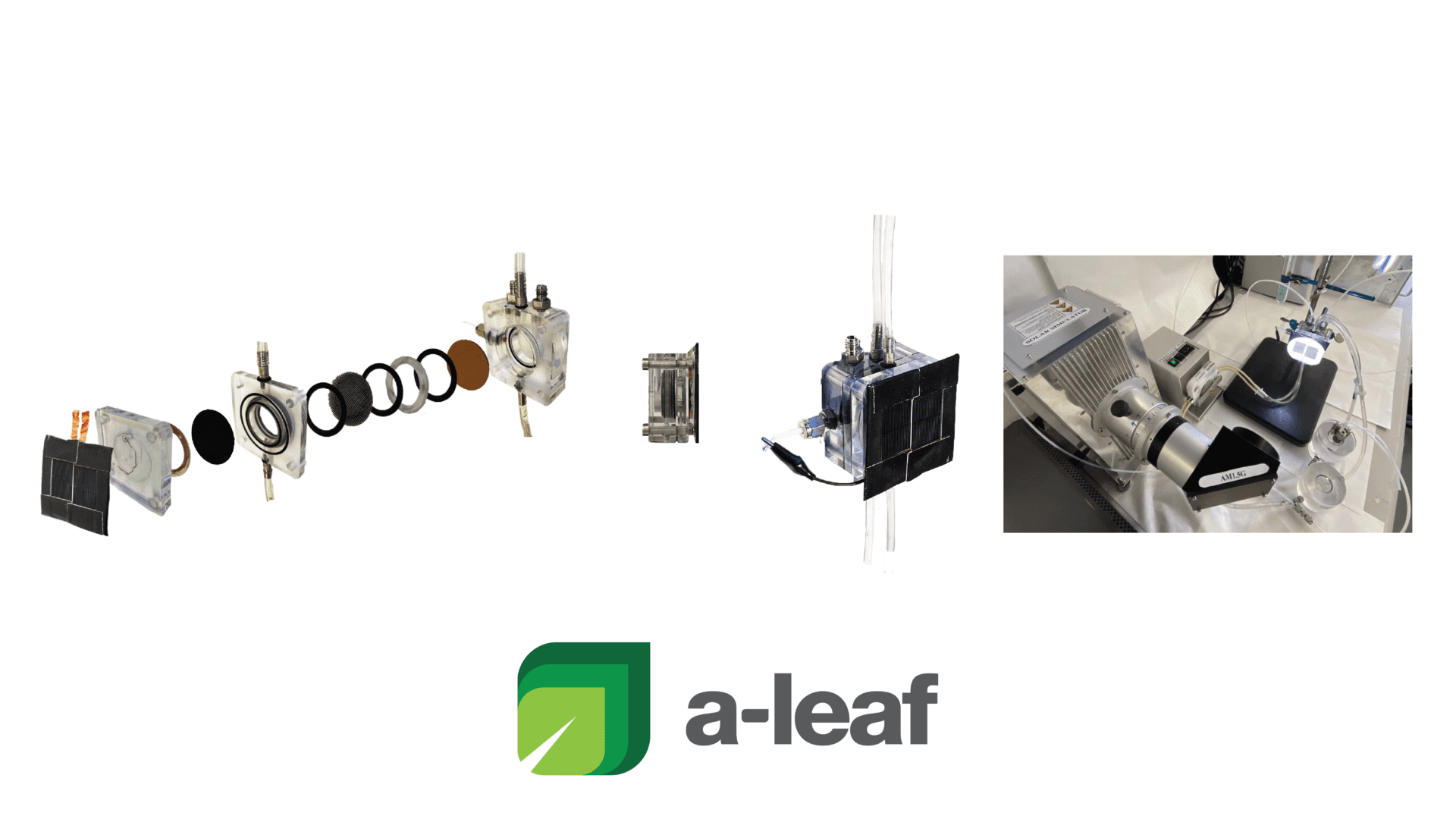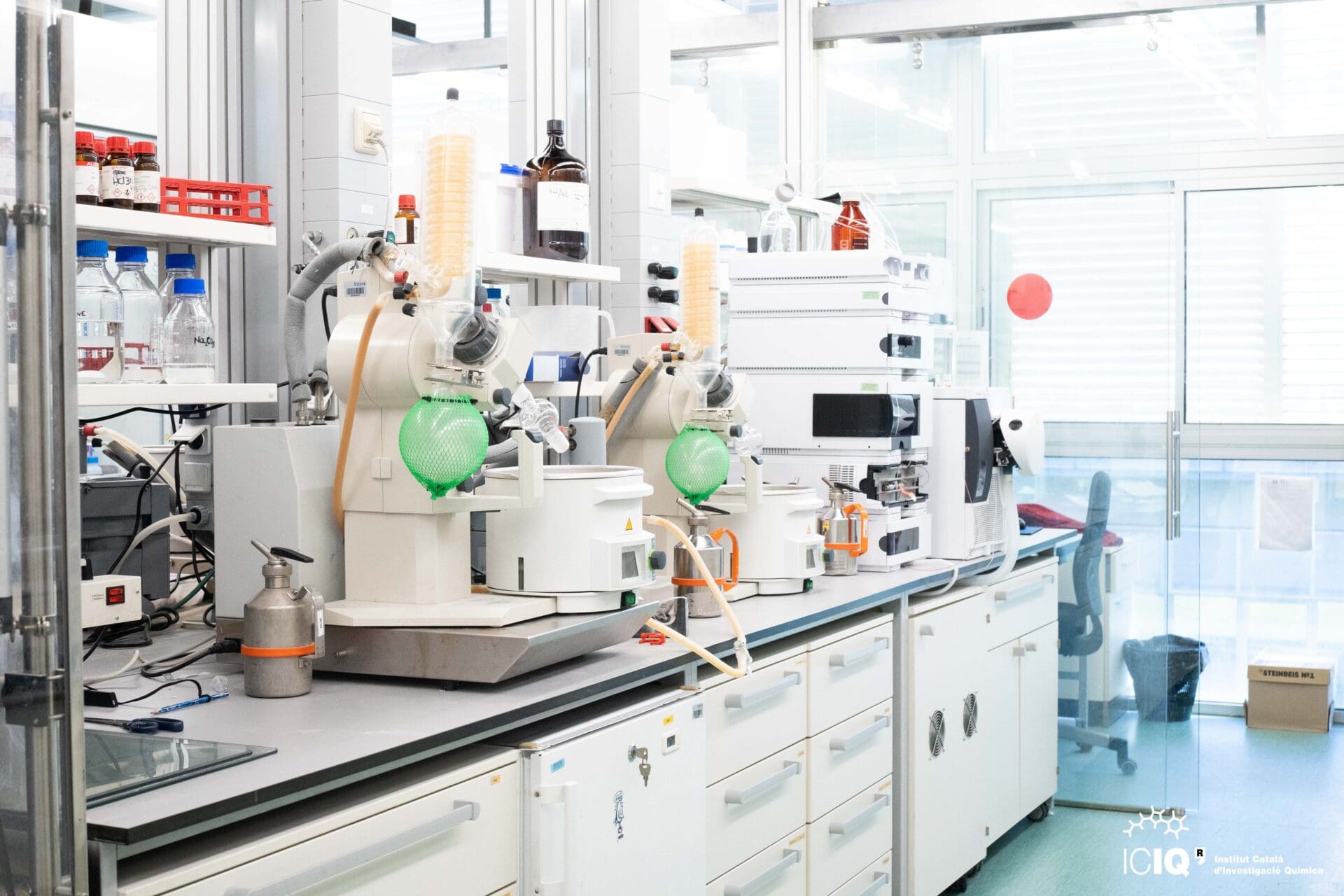A European Consortium Achieves Record Efficiency in Direct Conversion of CO2 and H2O into Sustainable Fuels using Earth-Abundant Materials
Scientists have announced a record-breaking achievement in the development of efficient and low-cost artificial leaf-type devices capable of directly converting carbon dioxide (CO2), water and sunlight into sustainable fuels.
This achievement is a significant step to support the energy transition and transforming the current energy model into distributed production.
A European consortium coordinated by Prof. José Ramón Galán-Mascarós from the Institute of Chemical Research of Catalonia (ICIQ-CERCA) with research institutions from France, Germany, Italy, Spain and Switzerland under the A-LEAF project, reports outstanding results to make affordable and sustainable energy in a close future.
The final outcome of this artificial photosynthesis research project, one of the biggest funded by the European Commission, consists of an autonomous device able to convert CO2 and H2O to fuels using sunlight. This innovative cell provides a solar-to-fuel efficiency of over 10% reaching world-record current densities without the use of any critical raw materials. This demonstrates that sustainability, and high productivity can also be achieved with low-cost and scalable materials.
Moreover, the team introduces the novel concept of producing hydrogen (H2) and an H2-storage element (formate) simultaneously, with the latter used to produce H2 in the absence of sunlight. This solution allows continuous (24/7) hydrogen production using an artificial-leaf device for the first time. “A-Leaf was a truly enjoyable and challenging project and ending up with a highly efficient prototype was the icing on the cake”, affirms Prof. Javier Pérez-Ramírez from the ETH in Zurich.
This approach was validated in compact electrochemical flow cell architecture, with electrodes based on Cu–S and Ni–Fe–Zn oxide (for proton and CO2 reduction and oxygen evolution reactions, respectively) supported on gas-diffusion electrodes, integrated with a low-cost Si-based photovoltaic module. The cell operates at a current density of about 17 mA cm−2 and a full-cell voltage of 2.5 V (stable for > 24 hours and during on–off operations), providing formate productivity above 190 μmol h−1 cm−2.

The results of this study pave the way towards the implementation of affordable artificial-leaf type systems in the future energy scenario, providing a sustainable solution to the major challenge of achieving energy transition and transforming the current centralized energy model into a distributed alternative. “This is the first example of an artificial leaf with an order of magnitude efficiency higher than natural leaf. This great step would have been impossible without the very close interaction and collaboration of many research centers with multidisciplinary competences. We are now searching to implement the next step of realizing a large-scale prototype to demonstrate the industrial feasibility”, says Prof. Siglinda Perathoner from the Università degli Studi di Messina.
The A-leaf technology is ready for further scaling and optimization, with the ultimate goal of constructing an artificial tree, supporting the dream of a sustainable future. “Beyond productivity numbers, our biggest success was to gather a European team of world-leaders in their different research fields to work together with a common goal: to demonstrate that an artificial leaf can work also when built exclusively from affordable materials, and to deliver a record performance in the state-of-the-art” concludes Galán-Mascarós.
About A-LEAF
 With nearly 8 million euros, A-LEAF was one of the of the biggest artificial photosynthesis research projects funded by the European Commission to develop a functioning prototype of an artificial leaf. The project was coordinated by Prof. José Ramón Galán-Mascarós from the Institute of Chemical Research of Catalonia (ICIQ-CERCA) and counted with 12 more partner institutions from 8 different countries: ETH Zurich, Universiteit Leiden, IMDEA Nanociencia, EPFL, Technische Universität Wien, Universitat Jaume I de Castelló, Imperial College, Technische Universität Darmstadt, Forschungszentrum Jülich, Université de Montpellier, INSTM-Università degli Studi di Messina and COVESTRO. A-LEAF started in January 2017 and lasted 54 months.
With nearly 8 million euros, A-LEAF was one of the of the biggest artificial photosynthesis research projects funded by the European Commission to develop a functioning prototype of an artificial leaf. The project was coordinated by Prof. José Ramón Galán-Mascarós from the Institute of Chemical Research of Catalonia (ICIQ-CERCA) and counted with 12 more partner institutions from 8 different countries: ETH Zurich, Universiteit Leiden, IMDEA Nanociencia, EPFL, Technische Universität Wien, Universitat Jaume I de Castelló, Imperial College, Technische Universität Darmstadt, Forschungszentrum Jülich, Université de Montpellier, INSTM-Università degli Studi di Messina and COVESTRO. A-LEAF started in January 2017 and lasted 54 months.
The A-LEAF project received funding from the European Union’s Horizon 2020 research and innovation program under grant agreement 732840
Reference article:
Ampelli, C., Giusi, D., Miceli, M., Merdzhanova, T., Smirnov, V., Ugochi, C., Astakhov, O., Martín, A.J., Veenstra, F.L.P., Garcés Pineda, F.A., González-Cobos, J., García-Tecedor, M., Giménez, S., Jaegermann, W., Centi, G., Pérez-Ramírez, J., Galán-Mascarós, J.R. & Perathoner, S.
“An artificial leaf device built with earth-abundant materials for combined H2 production and storage as formate with efficiency > 10%”
Energy Environ. Sci https://doi.org/10.1039/D2EE03215E
Related news

Let's create a brighter future
Join our team to work with renowned researchers, tackle groundbreaking
projects and contribute to meaningful scientific advancements








 21-02-2025
21-02-2025 


















